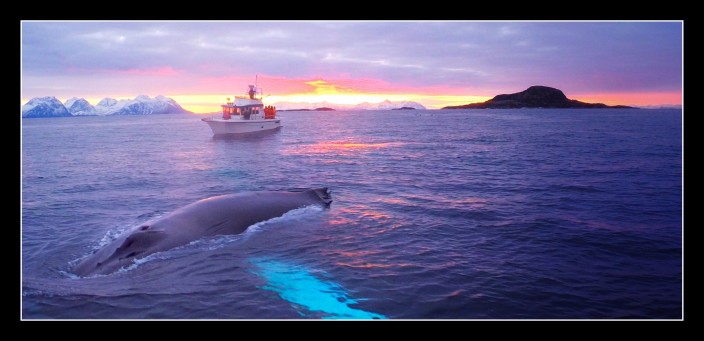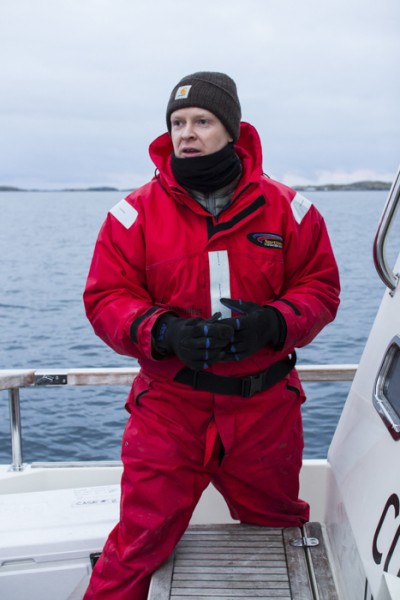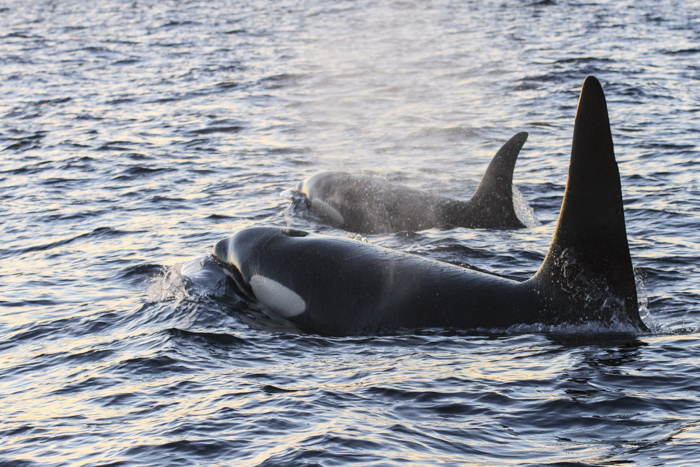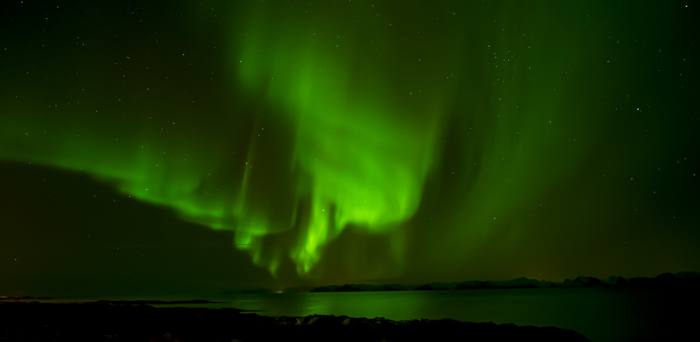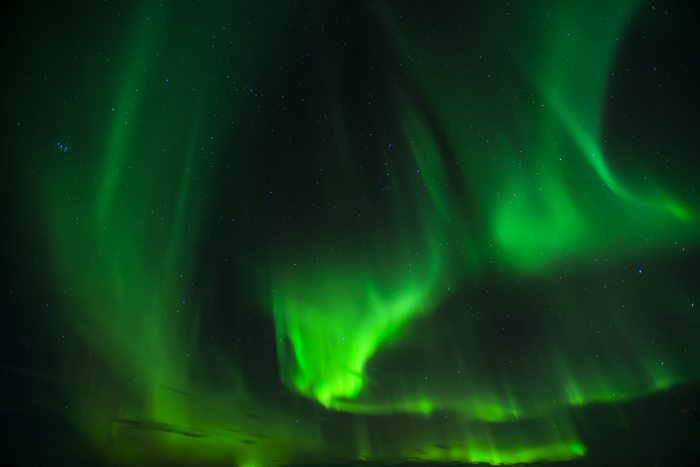Well that was a lot of fun. Two weeks bobbing around on the Arctic Ocean filming Orcas, Humpbacks, Fin Whales and whatever else rolled by for the BBC’s Atlantic series.
I’m very aware of the grim state of many of the world’s marine ecosystems, and I have absolutely nothing to compare my experience to (I suspect that the abundance of life in this region was simply staggering a couple of hundred years ago) but I was really impressed with the mass of life that surrounded us in our little boat. Every day we would see orcas and humpbacks, most days we’d also see fin whales too, and judging by the fantastic underwater footage that David Reichard shot – colossal seething schools of herring – there was plenty going on beneath the surface.
It seemed slightly bizarre; it was cold, sometimes rough, dark, but you could look at the horizon most days and loose count of the dozens of puffs of moist breath, looking like little chimney’s, as various whale species exhaled.
The behaviour we wanted to film was orcas co-operatively hunting herring; they herd schools into dense bait balls before whacking them with their tails to stun them, then they pick off individual fish as they float to the surface. It doesn’t happen anywhere else in the world, it’s very cool, and very difficult to film.
We’d be out before dawn looking for signs that the orcas were feeding – usually flocks of gulls on the horizon – and then try to manoeuvre the boat into position to drop the divers close enough to the action to film what was going on. This was all very tricky, the feeding bouts wouldn’t usually last very long, maybe a few minutes, and they could range over a pretty wide area.
Herring would bubble to the surface 40m of the port bow and there would be orca dorsal fins slicing the water in the distinctive way they do when they are feeding, we’d drop the divers in the water, but before they had time to get organised the main action would be on the other side of the boat moving away faster than the divers could swim. Or a huge humpback would steam through the bait ball ruining everything for both us and the orcas. This would be repeated regularly though the day, the divers getting in and out of a pitching and rolling boat – the water was cold and the wind bitter.
My job was to try to cover the action from topside, which had it’s own set of challenges. We’d toyed with the idea of bringing some kind of gyrostabilised camera platform to cope with the boat movement, but decided against it on the grounds of cost and practicality, which ultimately proved to be the right decision. The orca behaviour was so unpredictable; they never pop up in the same place twice, and never for more than a couple of seconds. The only way you could react fast enough to get an animal in frame was to be hand-held on the front deck. So I’d spend my days attempting to stay on my feet holding a heavy camera, trying to stabilise the boat movement, while aiming for shots where focus and framing were critical, and trying not to puke. A bit like performing neurosurgery while on a trampoline. I think I got better as the shoot went on, I didn’t puke.
It was fantastic fun, brilliant wildlife, a really great team and phenomenal scenery.
Huge thanks to Andrew, Lucy, David, Tore, PB, Anders, Thomas and Kenneth for making it so memorable – our brilliant Norwegian friends very kindly fed us cod cooked in unusual ways and didn’t throw us in the sea despite the threats.
I also got to see the Northern Lights for the first time, very very special, and impossible to do justice to with an image.
